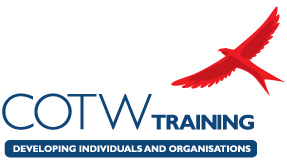Team Building and Creativity
The most creative and creatively engaged teams have a similar culture.
Business encourages individuals and teams to be creative – to innovate – as the way to beat the other guy. So what about the creativity process, and how can ordinary teams be encouraged to innovate?
Some companies attempt to program in creativity. Hewlett Packard is famous for allowing individuals to engage 15% of their time and resources on projects which are not directly related to their job. The 3M Corporation also encourages lateral thinking; the Post-It Note is symbolic. Others use so-called Skunk Works – for example the Skull and Crossbones which flew over the Apple MacIntosh Division during development of their microcomputer.
Other companies became interested in the idea of intrapreneurship, an idea popular in the eighties, which was a formalized process to encourage entrepreneurship within large organizations – better known for being bureaucratic than flexible and enterprising. Still others experimented with so-called parallel organizations that allowed “companies within companies” in order to support product champions and insulate them against nay-sayers.
In their research piece, “A Little Creativity Goes a Long Way: An Examination of Teams’ Engagement in Creative Processes” (Journal of Management 2004), Gilson and Shalley focus on what makes teams work effectively within a creative environment.
They found that most creative and creatively engaged teams had a similar profile:
- a belief that the job required creative solutions
- shared values and mutual trust
- a belief that a better outcome would occur by harnessing the ideas of all members within a supportive environment
- encouragement of good tries
Creative teams were more likely to socialize outside of work and the tenure of people was in the mid range. The team members were likely to say:
Being creative is probably the only way for teams to hit their numbers nowadays. We no longer have a boss telling us what to do or how to do it, so it is up to us.
Those within the teams agreed that, because of time pressure, there is a press to return to habitual ways of doing things. Therefore, it is important for the team leader and the corporate culture, to encourage creativity and also to reward it. The real test of commitment comes not from how success is treated, but rather from how failure is interpreted. In the most successful firms, “good tries” are almost as rewarded as “home runs.” As the authors say:
Engaging in creative processes can be viewed as a form of learning, since employees are searching for new and novel approaches to their work.
Given the frenetic pace of change today, constant renewal can only occur through parallel learning.
The research
While the outcome of creativity has been examined in detail in the past, such is not the case regarding team based processes that lead to such results. Hence, the research focus on what makes teams work effectively within a creative environment.
The authors write
For this study, we had access to a strategic business unit (SBU) of a large multi-national organization located in the United Kingdom. This organization allowed us to interview and collect survey data from all employees. During the initial phase of the study qualitative interviews were conducted with the HR Director, team leaders, and team members.
The organization studied sells, services, and maintains large office equipment. All the participants were service technicians whose job it was to maintain the equipment at customer sites. Two years prior to our data collection the SBU had restructured from a traditional hierarchical management structure to self-managed teams. Thus, the teams had sufficient time to develop their own ways of operating and interacting.
Teams were evaluated in terms of the predicated behaviour through cluster analysis where they are “clustered” in relation to how similar they were within a cluster and how different they were between clusters. Therefore, the most powerful predictor would be where there is a strong similarity within teams and a strong difference between teams regarding creative cultures.
Team creative processes were assessed, in keeping with prior research, by the team leaders. All teams had a team leader who was responsible for facilitating the running of the team in addition to performing their service functions. Based on previous research, prior measures were either used, or new ones developed to test the hypotheses.
The results discussed previously seem intuitive, but their execution is another matter. It takes resolve to develop and reward a culture of creativity.
Thus, it is important for management to begin to think about ways that they can help to enhance team members’ ability to engage in these processes.
For more information on team building visit our website.















